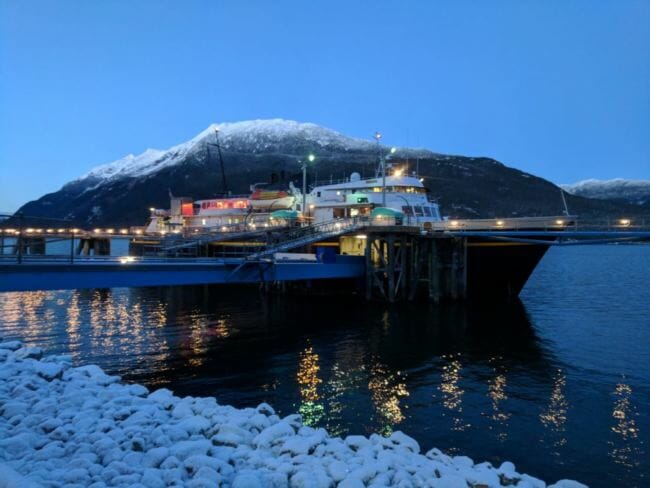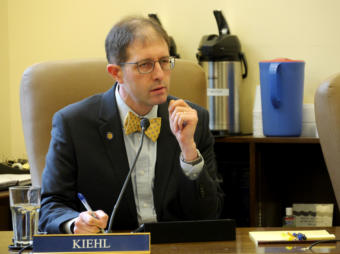
Another Alaska ferry could be dropped from the winter schedule leaving Southeast communities scrambling for alternatives.
“The M/V LeConte is in need of more repairs that (sic) originally budgeted for,” wrote Department of Transportation spokeswoman Meadow Bailey in an email answering questions over the fate of the decades-old ferry that serves small communities like Tenakee Springs.
There’s no regular barge service or a land airport to the Chichagof Island community, that means the ferry is the primary way in and out. The community has a winter population of about 60 people.
“We have the ferry and then we have seaplane service,” said Tenakee Springs Mayor Dan Kennedy.
“I’ve been here 30 years I’ve seen some winters where we didn’t get a plane for almost three weeks,” he said.

The Department of Transportation budgeted $1.2 million for the LeConte’s overhaul, but when it got to the shipyard this month, the ferry needed an additional $4 million worth of steel work.
Critics said the state should’ve planned ahead and applied for more federal funds for these overhauls.
“Nobody should be surprised that 46-year-old boats spend their whole lives in saltwater need a lot of steel replaced,” said Sen. Jesse Kiehl, D-Juneau.
He said poor planning by successive administrations has gotten the Alaska Marine Highway System into this. But, politics aside, he said people in his district depend on the ferry.
“We recently heard Alaskans in the Railbelt really upset that middle of the night plowing might be delayed for daylight hours, because it reduces their access and their safety,” Kiehl said. “We have a ferry schedule that radically reduces our safe access from one community to another … We can’t keep going like this. It’s going to hurt the economy and hurt our families and schools, it’s not okay.”
State officials have delayed work on the LeConte until further notice.

Ordinarily, this wouldn’t be such a big deal. But her sister ship, the Aurora, is also being overhauled this winter.
State officials haven’t said what service would look like in Southeast with both ships offline. DOT’s Meadow Bailey said the plan is to bring both into dry dock for a side-by-side comparison next week to see which needs less work.
But, both of those ships usually service the smaller communities in Southeast Alaska. In Tenakee Springs, Kennedy said the larger ferries can’t maneuver into his town’s dock.
“Our ferry dock is in in horrible shape is supposed to be going out to bid to be replaced next summer. So I doubt whether they’d want to, you know, bring in a bigger ship to keep us going with if the little ones were both down,” Kennedy said.
And, it’s not just the smaller ships having issues. Earlier this month DOT announced the Malaspina would be in layup indefinitely starting in December.
State officials cited the $16 million cost of steel work as its reasoning for taking that ship out of service. Though again it was unclear how much of this could be covered with federal transportation dollars.
In Hoonah, a city of fewer than 800 people, Mayor Gerry Byers said local stores are already stockpiling dry goods as ferry service gets less frequent. But for fresh produce and perishables, “it’s already expensive enough,” he said.
“If they have to fly that stuff over at 50 cents a pound, that’s eight pounds per gallon milk,” Byers said. “So you’re going to have to add that $4 on the cost they’re already paying.”
The state does have two brand-new ferries, the Tazlina and the Hubbard. But, neither are on the winter schedule. That’s because the state is adding side doors to allow them to load and unload more efficiently.








